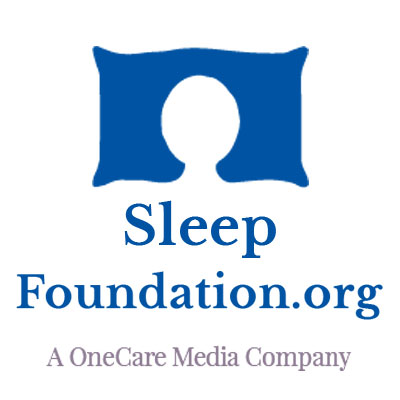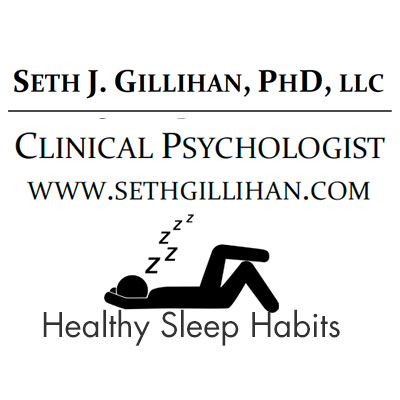
Sleep and Insomnia
What Is Insomnia?
Countless adults in the US suffer with insomnia, a frustrating inability to sleep. Insomnia can make it hard to fall asleep (sleep “initiation”), to stay asleep (sleep “maintenance”), and/or to sleep as late as one wants to (early morning awakening).
While everyone’s experience is somewhat different, a common pattern emerges in the development of insomnia:
First, there is usually some acute issue that disrupts sleep. Common factors include having a baby, pain, stress, or a new medication.
Next, we tend to make adjustments to try to make up for lost sleep. Maybe we sleep in the next morning, or we go to bed an hour earlier the next night, or we take a nap, or we lie in bed awake trying to will ourselves to sleep.
While giving ourselves more opportunity to sleep might have a short-term benefit, we often end up losing in the long run. The problem we often create is giving ourselves more opportunity to sleep than we’re actually able to sleep.
Imagine you’re used to getting 7 hours of sleep on average, and you’re taking a medication that is making you sleep only 6 hours. You’re exhausted after 6 hours’ sleep, so you take a nap from 4-5 pm, then go to bed at your regular time.
What’s likely to happen is that you’ll have a hard time falling asleep because your body got 7 hours’ sleep in the past 24 hours (6 hours at night + 1 hour nap). In addition, napping as late as 4 pm is going to prevent you from falling asleep easily since you’ve weakened your body’s drive for sleep.
Enter Anxiety
For most of us, being unable to fall asleep is not a neutral experience. We tend to worry about not getting enough sleep, and when we haven’t been sleeping well we may become preoccupied with our sleep. Lying in bed for hours each night generally leads to a lot of stress, and that stress gets associated with being in bed.
Now your body and mind will begin to feel anxious just from getting in bed, as the thoughts and worries start to spiral: Will I sleep well tonight? Am I going to be a wreck tomorrow? How will I function on so little sleep? What if I get sick from being worn down? etc.
CBT-I
Over the past few decades, a treatment was developed that can help the vast majority of people with insomnia to fall asleep more quickly and sleep more soundly. It’s called cognitive-behavioral therapy for insomnia or CBT-I, and it’s the best available treatment for sleep problems.
CBT-I is designed to treat the very factors that maintain insomnia, and usually includes the following components:
- Sleep Scheduling, also called sleep restriction. You will keep careful records of the time you spend in bed and how much of that time you’re asleep. Based on these records, you will be instructed to spend only as much time in bed as you’re able to sleep, on average. For example, let’s say you tend to spend 9 hours in bed, and it typically takes you 30 minutes to fall asleep; you’re awake for an additional 90 minutes in the middle of the night. Thus you’re spending 9 hours in bed but only sleeping 7 hours, on average. Your initial sleep schedule would be to go to bed at a set time (say, 11 pm) and to get out of bed 7 hours later (6 am). Over time your body will come to expect sleep from 11 pm to 6 am, and you’ll start falling asleep more quickly and sleeping more soundly.
[The Most Important Way to Fight Insomnia on Psychology Today Blog] - Stimulus Control. The big idea with stimulus control is one you’re probably familiar with: Don’t spend time in bed if you’re not asleep. There are two parts to this guideline: Don’t do non-sleep activities (other than sex) in bed and don’t stay in bed if you’re having difficulty sleeping. (The term stimulus control means you control what behaviors you pair with bed, the “stimulus.”) The goal is to make a strong association of Bed = Sleep, rather than Bed = Stressed/Awake/Anxious/Irritated. This rule applies whether you’re having trouble sleeping at the beginning, middle, or end of the night. In CBT-I you will get out of bed and do something else when sleep does not come quickly, and return to bed typically after 30 minutes to 1 hour.
- Sleep Hygiene. Most of us are familiar with common recommendations for better sleep: limit caffeine intake; make the bedroom cool, dark, and quiet; exercise regularly; etc. While these tips are sound ones for good sleep in general, and can be an important part of treatment for insomnia, they are not effective by themselves for helping the vast majority of insomnia sufferers. So if you tried sleep hygiene recommendations by themselves and they didn’t help your insomnia, take heart: there’s much better treatment available.
[Exercise Improves Sleep—But Maybe Not How You Think on Psychology Today blog]
[Good Sleep Is Low Tech on Psychology Today blog] - Cognitive Therapy. When we’ve been sleeping poorly for a while, our thoughts often start to work against us. We might start catastrophizing, telling ourselves we won’t be able to function the next day if we don’t get enough sleep—which obviously doesn’t help us fall asleep. By identifying thoughts that aren’t accurate and/or helpful, you can replace them with ones that are more adaptive and that don’t exacerbate your insomnia.
- Relaxation. If needed, CBT-I will include training in relaxation to counteract the tension and anxiety that can accompany sleeplessness. With training you can learn to relax more quickly and completely.
- Mindfulness. Training in mindfulness can be helpful in multiple ways. The practice generally is about focusing on the present in an open and nonjudgmental way. Mindfulness meditation tends to be relaxing, which can be helpful by itself. Practicing a present-focus can also stop us from worrying about whether we’ll sleep well tonight. The acceptance part of mindfulness is also very helpful, allowing us to let go of efforts to force ourselves to sleep, or worrying needlessly about our sleep. When we open to whatever the night may bring, we suffer less, no matter how we sleep that night. And thankfully, we also tend to sleep better.
[Meditation in Bed]
[How to Fix Broken Sleep on Psychology Today blog]
Additional Resources
National Sleep Foundation: Cognitive-Behavioral Therapy for Insomnia
Cognitive Behavioral Therapy for Insomnia, often called CBT-I, is an approved method for treating insomnia without the use of sleeping pills. Sound impossible? It isn’t. Sounds like hard work? It can be. CBT is aimed at changing sleep habits and scheduling factors, as well as misconceptions about sleep and insomnia, that perpetuate sleep difficulties.
Mayo Clinic: Insomnia
Insomnia is a common sleep disorder that can make it hard to fall asleep, hard to stay asleep, or cause you to wake up too early and not be able to get back to sleep. You may still feel tired when you wake up. Insomnia can sap not only your energy level and mood but also your health, work performance and quality of life.
American Academy of Sleep Medicine: Insomnia Practice Parameters
Other Resource Pages
Sign up below to get the free guide, “10 Ways to Manage Stress and Anxiety Every Day,” and to receive the Think Act Be newsletter on Substack.



